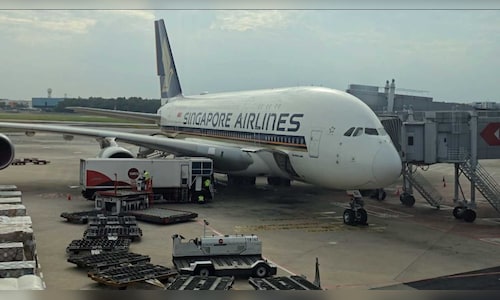131 passengers and 12 crew members who were on board SQ321 arrived in Singapore via a relief flight on 22nd May. As per the last update shared by the airline, five more passengers returned to Singapore on 22nd May. One more crew member is scheduled to reach Singapore today. 74 passengers and five crew members are still in Bangkok and are receiving medical treatment.
In a statement, Peter Seah, Chairman, Singapore Airlines, said: “On behalf of the Singapore Airlines Board, I extend my deepest condolences to the family and loved ones of our passenger who passed away on 21 May 2024 in the SQ321 incident. I assure all passengers and crew members who were on board the aircraft that we are committed to supporting them during this difficult time. I also wish to express my gratitude to everyone in Singapore, Thailand, and around the world who are assisting those affected by this incident.”
Singapore Airlines flight SQ321 was Boeing 777-300 ER, operating from London Heathrow to Singapore. The aircraft encountered sudden extreme turbulence over the Irrawaddy Basin in Myanmar at an altitude of 37,000 feet.
According to flight tracking website Flightradar 24, “The flight departed London at 21:38 UTC (22:38 local time) on 20 May proceeding southeast toward Singapore. Based on ADS-B data sent directly from the aircraft, at approximately 07:49 UTC on 21 May, the flight encountered a rapid change in vertical rate, consistent with a sudden turbulence event. At 08:03 UTC the aircraft changed course and began a diversion to Bangkok. SQ321 landed in Bangkok at 08:45 UTC (15:15 local time), where it was met by medical personnel.”
In it’s blog Flightradar 24 said, “After processing the high-frequency ADS-B data for SQ321 and correlating the possible event time with media reports, we believe the turbulence event occurred at 07:49 UTC. In normal flight, some small variation in vertical rate is expected, however, at 07:49:24Z.824 the first ADS-B frame with an increased vertical rate is received by our network. There are unexpected changes to the vertical rate for nearly one minute before returning to 0 feet per minute.”
A pilot told CNBC-TV18 that whenever the weather ahead is bad, pilots can see it on their flight instruments. Accordingly, pilots turn on the fasten your seatbelt sign for passengers’ safety. In some cases, pilots will announce that the weather is bad, please be seated and fasten your seatbelts. During this period, no meals are served. The pilot added, “We all are well-trained to fly in all kinds of weather conditions. Broadly, turbulence is of three kinds, but at high altitudes, it is associated with jet streams.
Singapore Airlines also revealed the nationalities of the passengers on board. Of the total 211 passengers, three are from India, 56 from Australia, two from Canada, Spain, Indonesia, and Myanmar; one each from Iceland and Israel, Germany, and South Korea; four from Ireland, 16 from Malaysia, 23 from New Zealand, five from the Philippines, 41 from Singapore, 47 from the United Kingdom and four from the US.
The Singapore Airlines CEO extended his condolences to the family and loved ones of the passenger who died in the incident. “We are very sorry for the traumatic experience that everyone on board SQ321 went through. Our priority is to render all possible assistance to the passengers and crew members,” he said.
Also Read: Explained | Turbulence occurs on every flight: Should you be worried?

